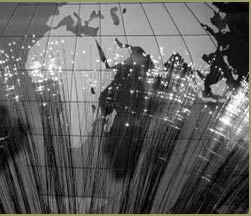
The university has always been committed to enrolling a student body and hiring faculty and staff members who reflect the demographics of the state, the nation, and, indeed, the world. Yet, despite this unwavering commitment, there have been barriers to achieving a diverse campus community. The population of Wisconsin itself is not racially diverse, making it a challenge to achieve a broad pool of prospective students. Higher rates for non- resident tuition also have discouraged some student applicants. And for some 30 years, UW-Madison has experienced a steady decline in the percentage of its overall budget supported by Wisconsin taxpayers—from 43 percent in 1973 to just under 24 percent in 2003. This dwindling support has threatened programs created specifically to address hiring and retaining a diverse faculty and staff. Beginning in the 1990s, the university initiated a number of specific programs to change campus demographics. Among them are an innovative partnership with selected Wisconsin middle schools and high schools that identifies students of color who have strong academic potential and helps them to prepare for college, and a strategic hiring program to recruit and retain tenured or tenure-track minority faculty members. These efforts, while fruitful in the present, have been laying essential groundwork for the campus community of the future. Those who are working toward a diverse community know the reward—success will benefit not one special group, but instead, improve the educational and employment experiences for all groups by creating a comfortable, yet stimulating, environment. As new ways of communicating continue to compress both time and distance, the university will reach beyond the state's borders to other areas of the country and to many regions of the world. Strengthening these connections is a powerful teaching tool. As students, faculty and staff, and the larger university community share varied perspectives, values, customs, and histories, each person will become better prepared for the daily experiences of life and work. When students look out into their immediate surroundings, it is important that they see diversity in the faces looking back at them. They must learn to understand and appreciate differences, and embrace the potential that lies in truly understanding and respecting others. Only then will they be ready to step into the whole wide world. |
 |
|||
|
The Information Technology Academy assists students of color and economically disadvantaged students to attain technological literacy as they prepare for higher education and their eventual careers. The university's Division of Information Technology created the program in 1999 as a way to further the university's goal of increasing the number of these students who enroll at UW-Madison. Each year, the academy competitively recruits 15 students from Madison's public schools. During their final semester of eighth grade, the students begin to participate in the program, which includes four years of intensive training in preparation for careers in high-tech, information-technology fields. Through hands-on training, mentoring, leadership development, community service, and internship opportunities, the students learn the knowledge and skills needed to increase their own—as well as their communities'—access to technology. The academy's dual focus on academic excellence and technological literacy prepares promising students for learning and leadership in the digital age.
|
||||
| Home
| Chancellor’s Message Learning | Research | Community | Partnerships | Campus Year In Review | Facts & Figures |
||
| Chancellor's Page | UW Home | ||
File last updated: December 19, 2003 Feedback, questions or accessibility issues. Copyright © 2003 The Board of Regents of the University of Wisconsin System. |
||